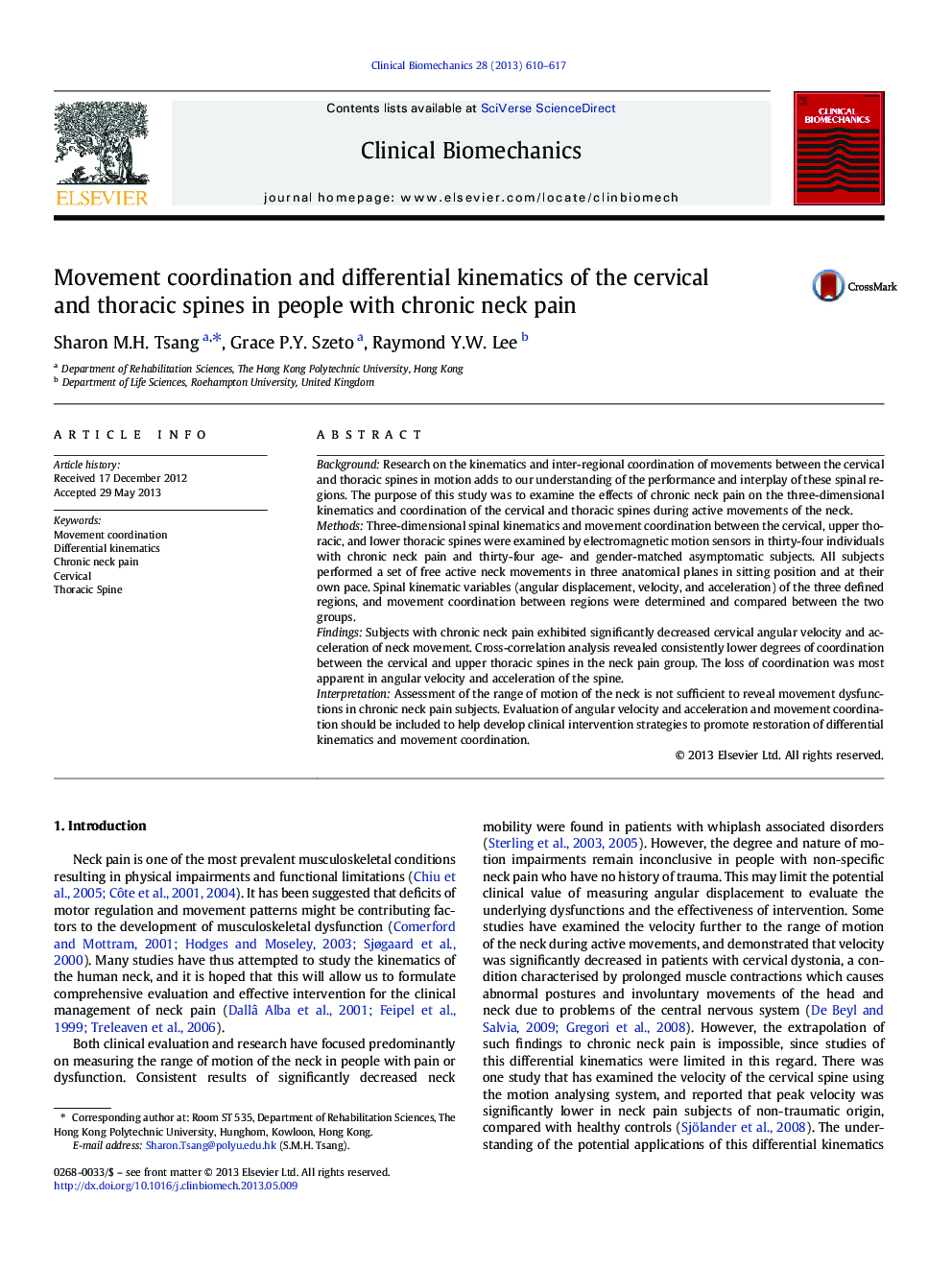| Article ID | Journal | Published Year | Pages | File Type |
|---|---|---|---|---|
| 4050654 | Clinical Biomechanics | 2013 | 8 Pages |
BackgroundResearch on the kinematics and inter-regional coordination of movements between the cervical and thoracic spines in motion adds to our understanding of the performance and interplay of these spinal regions. The purpose of this study was to examine the effects of chronic neck pain on the three-dimensional kinematics and coordination of the cervical and thoracic spines during active movements of the neck.MethodsThree-dimensional spinal kinematics and movement coordination between the cervical, upper thoracic, and lower thoracic spines were examined by electromagnetic motion sensors in thirty-four individuals with chronic neck pain and thirty-four age- and gender-matched asymptomatic subjects. All subjects performed a set of free active neck movements in three anatomical planes in sitting position and at their own pace. Spinal kinematic variables (angular displacement, velocity, and acceleration) of the three defined regions, and movement coordination between regions were determined and compared between the two groups.FindingsSubjects with chronic neck pain exhibited significantly decreased cervical angular velocity and acceleration of neck movement. Cross-correlation analysis revealed consistently lower degrees of coordination between the cervical and upper thoracic spines in the neck pain group. The loss of coordination was most apparent in angular velocity and acceleration of the spine.InterpretationAssessment of the range of motion of the neck is not sufficient to reveal movement dysfunctions in chronic neck pain subjects. Evaluation of angular velocity and acceleration and movement coordination should be included to help develop clinical intervention strategies to promote restoration of differential kinematics and movement coordination.
